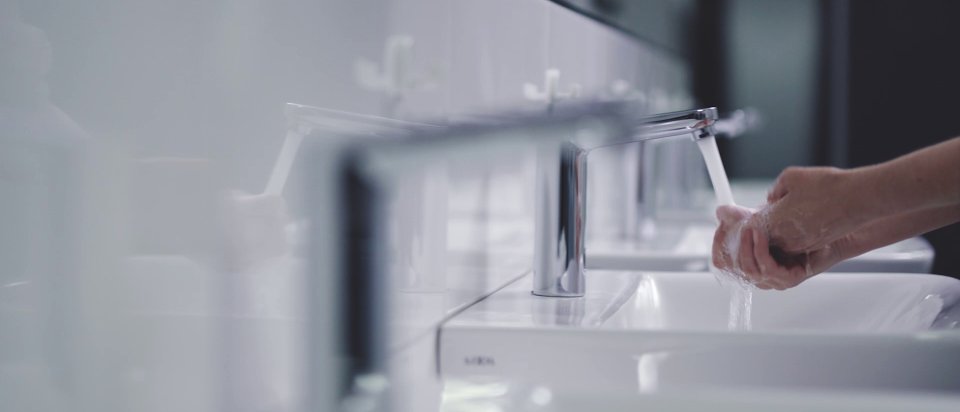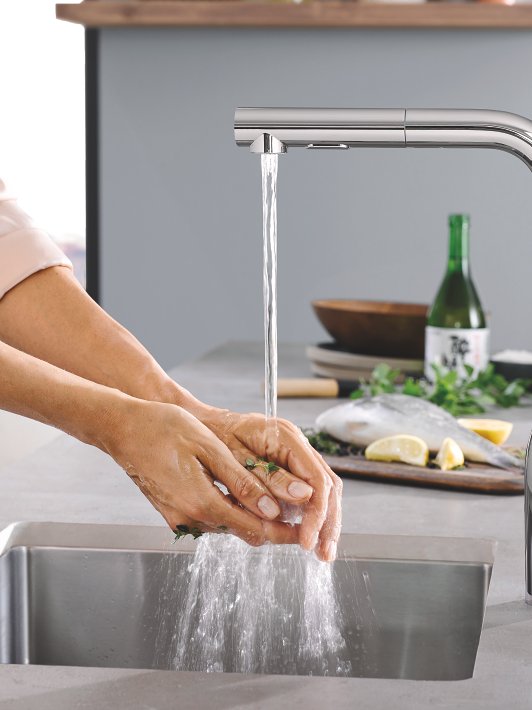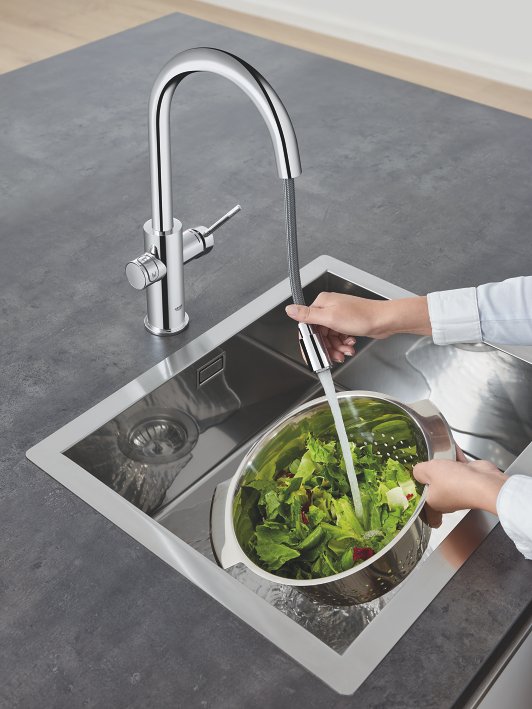
FOOD HYGIENE
FOR HEALTHY CONSUMPTION
From being plucked from the orchard to being transported in crates to then being sold in the supermarket, food inevitably comes into contact with germs along the way. Before we bite into a juicy apple, we should make sure it has been stored properly, check its freshness, and clean it. After all, food germs such as bacteria, viruses or fungi can lead to infections or even poisoning. By following a few hygiene rules when buying, storing, and preparing food, you can keep the risk to a minimum.

REDUCING THE AMOUNT OF BACTERIA IN FOOD: TIPS FOR PURCHASING AND STORAGE
Fresh food lasts longer. The German Federal Institute for Risk Assessment (BfR) recommends that consumers pay attention to the following when food shopping.¹
- Observe the best-before and expiration dates. Be aware that it doesn't necessarily mean that food with an expired best-before date is spoiled.² In addition to the date; smell, consistency, and appearance also indicate whether a product is still good to eat. Perishable food should not be consumed after the expiration date.
- Check whether the product packaging and the food inside is still intact.
- When it comes to frozen foods and other perishable products, make sure they are transported home quickly (e.g. in a cool bag) so that the cold chain isn't interrupted.
The German Federal Centre for Health Education (BZgA) provides valuable tips on storing food.²
- Store food in cool and dry places.
- If you store food in lockable containers, make sure no pests can get into them. This also applies to packaged goods.
- Separate eggs and meat in the refrigerator and use containers to keep germs, such as bacteria, away from food.
- The temperature in the refrigerator should be kept below 7 °C. In the freezer or freezer compartment, it should not exceed -18 °C.
- Cleaning the refrigerator regularly improves food hygiene.
- Never leave the refrigerator door open for long periods of time and check the temperature with a thermometer as a precaution if this accidentally happens.
- Consume food from opened packages and perishable food as quickly as possible before bacteria can multiply and mould forms.
- Do not remove food from the refrigerator until right before you plan to eat or prepare it.
- Before eating, check whether the best-before or expiration date has passed and whether the food is still edible.

PREPARING FOOD WITHOUT THE GERMS
In order to be able to enjoy your meals without any concerns, the German Federal Institute for Risk Assessment³ and the Federal Centre for Health Education⁴ recommend the following:
- Hands washing: Clean your hands before preparing food, after taking a break, or when you go to the bathroom or do other household chores during the food preparation. Following proper food hygiene rules is especially important when handling raw meat and vegetables. Also make sure not to touch your face by accident.
- Wear a kitchen apron: To prevent food germs from spreading around the home, it is a good idea to wear an apron. In general, the clothing you wear to prepare food should not have been used for any other household activities or gardening. Also, ensure you take off your watch and any hand jewellery, and don't sneeze near any food.
- Protect wounds: If you cut your finger or somehow injure yourself while chopping vegetables, you should disinfect the wound and apply a waterproof dressing. Another option is to wear protective gloves to keep bacteria and other germs in food away from the wound.

• Wash ingredients beforehand: Whether fresh mushrooms, minced meat, or vegetables, all raw foods must be carefully cleaned before you prepare them or eat them. Plants that grow underground should be peeled as a precaution.
• Prepare separately: Throw away packaging immediately and use kitchen roll to wipe away any of the water that has come off the thawed food. Use different knives, cutting boards, and containers for raw meat and vegetables. Neither should come into contact with cooked or ready-to-eat food.
• Follow the correct order: Food hygiene works better if you first prepare ingredients that do not need to be heated (e.g. ingredients for salad dressing or dessert). Then prepare lettuce and other vegetables and fruits intended for raw consumption. Finally, get started with the raw meat and fish.
• Prepare as quickly as possible: Rapidly perishable foods should not be taken out of the refrigerator until you're about to prepare them or eat them and even then they should be processed as quickly as possible. If the preparation is taking longer than expected, you can store these foods and other prepared ingredients in the refrigerator for a while.
• Heat up properly: Whether you’re using a saucepan or frying pan: bacteria in food are killed at temperatures between 70 and 100 °C. When preparing dishes or reheating food leftovers, the food must be heated to at least 70 °C for at least two minutes. Eggs, on the other hand, should be cooked for at least five minutes. Choose a high temperature and use a meat thermometer if necessary. If you don't want to lose the valuable nutrients in raw sprouts, herbs, or salad leaves when heating, try blanching. Blanching is a good compromise between cooking and raw consumption.
• Serve: It is better to serve ready cooked food straight away, leave it on the stove on a low flame for the last few minutes before serving, or keep it in a container that can preserve the temperature.
Our GROHE tip
Kitchen mixer taps can cause germs to spread even more. Sensor taps, on the other hand, are touch-free so they reduce the risk of germ transmission even further. You will find corresponding models in our catalogue. Save yourself some work when blanching vegetables: With GROHE Red taps, you get boiling hot water at the touch of a button.
List of sources:
¹ Bundesinstitut für Risikobewertung: Broschüre Schutz vor Lebensmittelinfektionen im Privathaushalt, S. 2f.
² Bundesministerium für Ernährung und Landwirtschaft (BMEL): BMEL
³ Bundesinstitut für Risikobewertung: Broschüre Schutz vor Lebensmittelinfektionen im Privathaushalt, S. 4f.
⁴ Bundesinstitut für gesundheitliche Aufklärung (BZgA): infektionsschutz.de